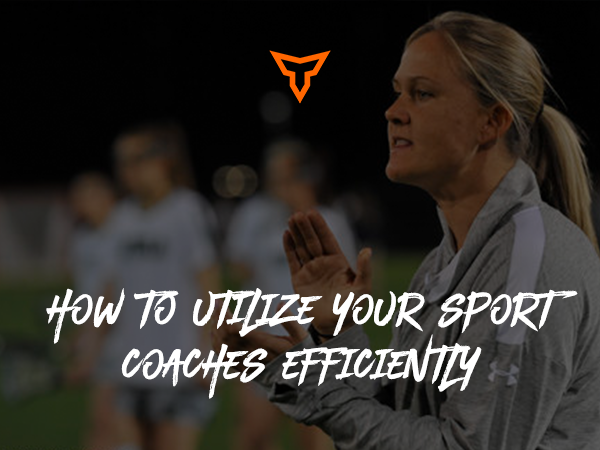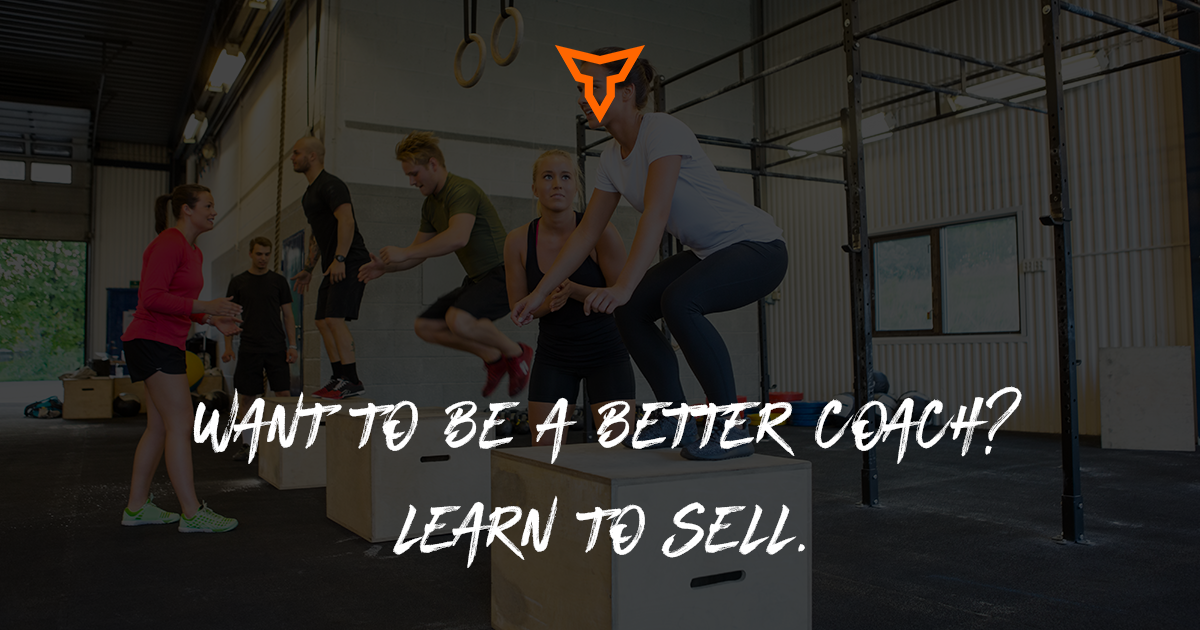I genuinely believe that every person in the world should hold a sales job at least once in their life.
Working in sales taught me all those business-book cliches - resilience, resourcefulness, and grit. But more than anything else, working in sales taught me a great framework to develop empathy. It’s easy to cast off sales work with the stigma of shady people doing shady things when really it’s just like strength and conditioning: from the outside, you only see the worst of it. On the inside, you will find people who have developed great fortitude, deep understanding of themselves, and care deeply about bringing the best of themselves to the people they serve.
I was lucky to be mentored by passionate, charismatic students of the psychology of decision-making. Their first rule and guiding principle was that our success included an obligation to throw the rope back over to those that follow us. With that in mind, I’m going to share with you the framework that was imparted to me with some ideas of how you can bring this back to the weight room.
How to Structure a Deal - Who What Why and How
The Who
From day one, I was inundated with this one sentence: the deal lives in the who. When you’re talking about making a big-ticket purchase it’s really obvious: if the person who spends the money isn’t on board, the money isn’t getting spent. However, in the weight room it’s just as true: your athletes need to buy in to your program in order for it to be successful. I’m not going to go too far down the path of how to connect with your athletes (you probably already do a hell of a job of it plus people much wiser than I have written books about it), but what I will call out here is understanding how each person fits into building that buy-in.
If you are a football coach with 100+ athletes, or a track coach with twice that many, it’s going to take time for you to build the 1:1 rapport that you aspire towards. However, when you’re approaching that group, you need to identify a few key individuals that you need to win over and whose trust will buy you the trust of the rest of the team, at least for long enough for them to believe on their own. In a sales setting, we’d call that person the Decision Maker. The relationship with this person is vital, but don’t confuse that with a need for friendship. This relationship is built on respect and a mutual understanding that together you will achieve great things.
Take a second and think about a team that you work with. If you were a new coach showing up on day one, who are the one or two people that you need to believe in order for the rest of the room to give you the benefit of the doubt? What do they care about? What are they afraid of? Are you walking into a room where the seniors have had 4 head strength coaches? Are you the first strength coach this team has ever had? All of these aspects influence how you will go about building that rapport.
A lot of times strength coaches will think about the captain, but I challenge you to find your team’s emotional center: this person may not have a C on their jersey, but their approach dictates the tenor of the team. It goes without saying but this are the most essential relationships for you to develop. Without that emotional center, you’re going to struggle to win the room over. We used to say that if you couldn’t text your decision maker and get a text back quickly, you didn’t have a deal. If your team’s emotional center doesn’t feel that your relationship is a priority, what does that tell the rest of the team?
The What
The what is academic - you probably know a lot of this before you see the athletes for the first time. These are the circumstances that the people you’re coaching live in. Selling software, it was a matter of knowing the existing lay of the land, as well as the competitive environment. For your athletes, it’s about knowing what they’ve done before you got there, what worked, and what didn’t. Who they lost since the prior offseason and who they’ve gained. It’s also understanding, really deeply understanding, what their aspirations are.
For those athletes that you need to win over, think about their circumstances - and not just surface thinking, really consider what the sport means to them and how S&C can impact that. Is this team a perennial powerhouse looking to maintain its dominance? Is it a program that has finished last for the past few years looking to get up to .500? How long have the sport and strength coaches been around? How stable has the environment been? Would you characterize it as a healthy environment?
As human beings, we are animals. We respond to our surroundings and our circumstances. As someone trying to help solve a problem, you need to really understand what those circumstances are to really begin to flesh out the next step.
The Why
This is the section that separates the best from the rest. As both salespeople and strength coaches we are change agents. To put it simply, people don’t change for no reason. The more you can understand what creates a desire for change, the more you can affect their willingness to act. This is the essence of The Why.
People will change for two reasons - because they are ahead and want to stay there (Bill Belichik) or because they are behind and need to catch up (the cult of fake-Belichicks). In both cases, The Why is driven by pain, either avoidance of future pain or the alleviation of current pain.
As a salesperson, this is where you really have to flex your getting weird muscle by asking deep questions.
Here’s a snippet of a conversation you can probably relate to:
- Salesperson: “Coach, thanks for setting aside some time for us to meet. I’m really interested in hearing what’s got you frustrated enough to take a demo of TeamBuildr."
- Coach: “Well, our coaching staff spends a lot of time manually entering in data off athlete cards."
- Salesperson: “Sounds like running a weight room to me. At least you’ve got interns that can do the mopping while you’re writing programs."
- Coach: “Actually, my staff and I usually end up staying late to clean because our interns cap out their hours doing the data entry.”
- Salesperson: “That’s no good, how does your family feel about that?"
- Coach: “You know, it used to not be that big of a deal. But this past season, I missed my daughter’s last middle school basketball game and my son’s 5th grade science fair and that’s caused a lot of stress at home. We used to manage it really well, but I’m kind of walking on eggshells around the house."
People will more-or-less freely admit when they’re doing something sub optimally. A poor salesperson will be satisfied with that. A good salesperson will learn what “suboptimal” means. A great person will learn what “sub-optimal” feels like, and replay it to them to make sure they didn’t miss anything. We are phenomenally good at missing the forest for the trees, so when someone repeats back to us the steps we take and the consequences of those steps it can be a painful but enlightening experience.
Go back to those athletes you need to win over, what is the biggest rock in front of them? What does that rock look like? What does it feel like? How would you replay that back to them to help them see the broader reality of their own situation?
When you have The Why, you can now play back the value of making a change and create a pact. A pact that’s built on the trust you’ve developed through active listening, through reflection on someone’s fears and aspirations, and from your now deep understanding of the meaning of change. Given the line of thinking above, which thought is more effective:
- “Coach, I think we can save your staff a bunch of time in data entry."
- “Coach, I can’t really understand what it feels like to miss those parts of your kid’s life. But if we can show you a better solution for data entry so that you can get your interns onto more valuable work, give your assistants more autonomy, and make it to your daughter’s whole softball season would you be willing to give up the spreadsheets you’re using today?"
Deeper questioning creates empathy. Empathy creates an opportunity to align interests. Aligned interests create meaningful, relevant action.
Do you think you could make a case like that for your athletes? One that appeals to reason and shows how you’re aligned with their ambition? One that acknowledges what doesn’t work now and why change would be beneficial?
The How
The How is the rubber hitting the road and only matters in the context of a strong Why (which requires a strong Who). It’s defining the path from current state to future state. Again, the best know how to illuminate change in a completely different way than the rest. The best people can identify the smallest, least intimidating starting point that will have a significant effect. Remember, change is painful, but showing someone that they’re not jumping into an abyss goes a long way to helping them take that first step.
The best example I’ve ever seen of using the How was in the strength world. A friend who is an NBA strength coach advocates for his players to do a pre-game lift. He’s established a great rapport with the key players on the team. Whenever they add a new player he has a script he uses to great effect, “Give me six games.” If after six games a short pre-game lift doesn’t have them feeling and performing better, he’ll leave them alone.
His script works because he understands The Who (one of the best basketball players in the world, but in a state of transition and therefore vulnerability), The What (a new member of a team that is already extremely high-performing but just below contending for the championship), and The Why (a need to make the biggest impact possible either to justify a top-roster decision or to prove that they aren’t a bottom-roster contributor).
And guess what? Almost all of his players lift before a game now. The athletes know he understands where they’re coming from, what they aspire towards, and what they can fear out of change. Because of that, they are more willing to take him up on this short but very transparent six-game offer. Of course, just like no salesperson closes every deal they work not all of his athletes lift before a game, but every one of them trusts him to have their best interest in mind.
Go back your weight room: what is the smallest change that will have the highest impact on your athletes? How can you tie that change back to their Why? Can you create a script to make that change less scary?
My hope with this article is that you’ve found some nuggets that can help you enhance your fellowship with your athletes. As I’ve made this transition from sales leadership to building the business of RPR, we’ve adopted these same principles in our clinics and have witnessed hundreds of programs achieve better because they’re able to get away from the specter of perfection. By really meditating on the above ideas, we can develop true empathy. Through developing true empathy, we can become more effective strength coaches, more impactful teachers, and better human beings.
My challenge to you is to put these lessons to work and lead your organization from within on a foundation of empathy.
Subscribe to our blog
Subscribe to receive the latest blog posts to your inbox every week.
By subscribing you agree to with our Privacy Policy.
Related posts
Become a Super Strength Coach Using... Sports Coaches


Become a Super Strength Coach Using... Sports Coaches
Aug 26, 2019
5
min read
If You Want to Be a Better Coach, Learn to Sell


If You Want to Be a Better Coach, Learn to Sell
Jun 10, 2021
6
min read
Opinion: Big Football S&C Salaries Will Not Lift All Boats


Opinion: Big Football S&C Salaries Will Not Lift All Boats
Aug 30, 2019
5
min read

